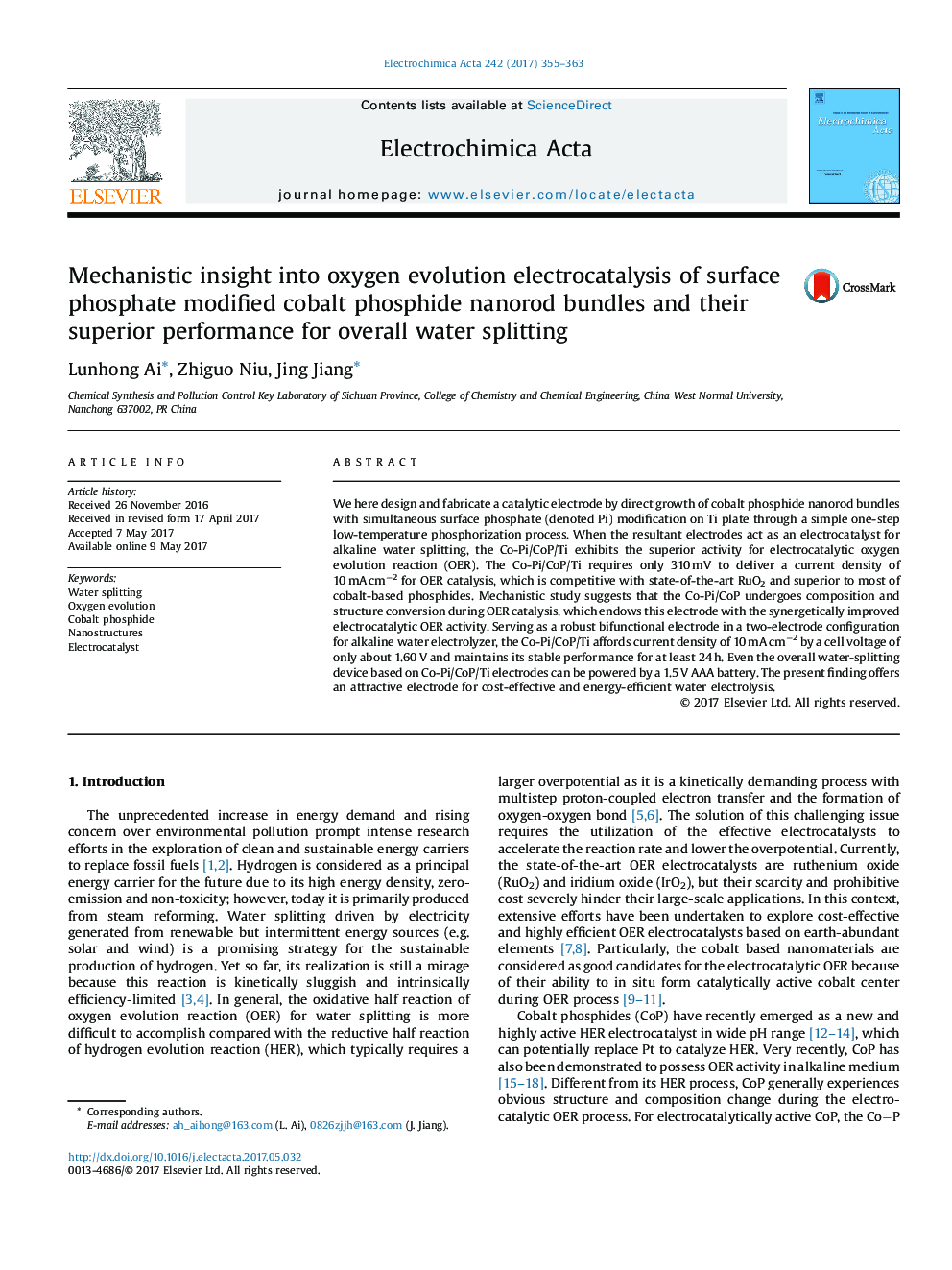| Article ID | Journal | Published Year | Pages | File Type |
|---|---|---|---|---|
| 6471220 | Electrochimica Acta | 2017 | 9 Pages |
â¢Co-Pi/CoP/Ti requires only 310 mV to deliver a current density of 10 mA cmâ2 for OER.â¢Co-Pi/CoP/Ti affords 10 mA cmâ2 by a cell voltage of only 1.60 V for overall water splitting.â¢The overall water-splitting device based on Co-Pi/CoP/Ti can be powered by a 1.5 V AAA battery.â¢OER mechanism of Co-Pi/CoP/Ti was systematically investigated.
We here design and fabricate a catalytic electrode by direct growth of cobalt phosphide nanorod bundles with simultaneous surface phosphate (denoted Pi) modification on Ti plate through a simple one-step low-temperature phosphorization process. When the resultant electrodes act as an electrocatalyst for alkaline water splitting, the Co-Pi/CoP/Ti exhibits the superior activity for electrocatalytic oxygen evolution reaction (OER). The Co-Pi/CoP/Ti requires only 310Â mV to deliver a current density of 10Â mAÂ cmâ2 for OER catalysis, which is competitive with state-of-the-art RuO2 and superior to most of cobalt-based phosphides. Mechanistic study suggests that the Co-Pi/CoP undergoes composition and structure conversion during OER catalysis, which endows this electrode with the synergetically improved electrocatalytic OER activity. Serving as a robust bifunctional electrode in a two-electrode configuration for alkaline water electrolyzer, the Co-Pi/CoP/Ti affords current density of 10Â mAÂ cmâ2 by a cell voltage of only about 1.60Â V and maintains its stable performance for at least 24Â h. Even the overall water-splitting device based on Co-Pi/CoP/Ti electrodes can be powered by a 1.5Â V AAA battery. The present finding offers an attractive electrode for cost-effective and energy-efficient water electrolysis.
Graphical abstractDownload high-res image (144KB)Download full-size image
